On the day that three park rangers joined my cruise to interpret Glacier Bay National Park and Preserve, I slept through their 6 a.m. arrival. But I was among the early birds gathered in the lounge for their 7:30 a.m. greeting, and when they later spoke from the bridge on a webcam channel, I listened from my stateroom with a park brochure and map spread out on the bed.
“Glacier Bay is a beautiful landscape,” Ranger Rianne Candelaria said to kick things off that June morning in southeast Alaska’s Inside Passage. “It’s an ever-changing landscape. It is 3.3 million acres, which is about the size of Connecticut.”
She described the “careful collision” the Park Service's M/V Serac did with the Discovery Princess so the rangers could climb a rope ladder to our ship, and she flagged that the process would be reversed that afternoon with the rangers “ready to wave you guys goodbye if we happen to impact your day today.”
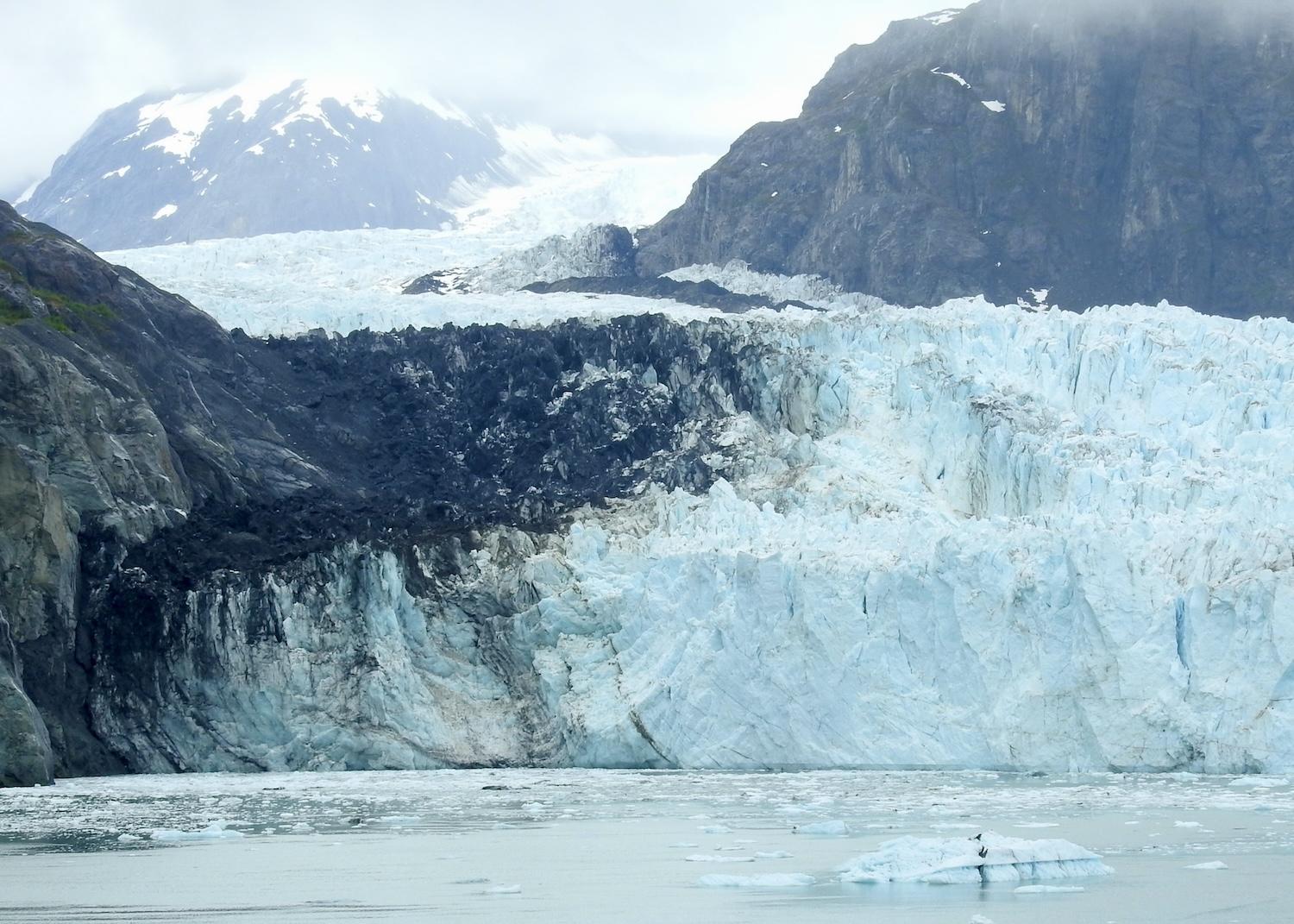
Pretty Margerie Glacier is the star of Glacier Bay National Park and Preserve in Alaska/Jennifer Bain
For nearly seven hours, we would scout for mammals both terrestrial and marine, and marvel at Margerie and other glaciers — all without getting off the ship.
“If you want to stay in your staterooms, be my guest, but we always recommend just being outside to be able to experience the park,” Candelaria gently concluded. “We’re going to get some good views of the glaciers and we’re hopefully going to see some cool wildlife today — and we’re just going to be spending a lot of good time with you guys.”
There are no roads to Glacier Bay’s tidewater glaciers and so most visitors are cruise passengers. Last year, 258 ships visited the Y-shaped fjord within the park and most carried more than 2,000 passengers. The park logged a record 703,659 visitors. The only developed area is Bartlett Cove, home to the park headquarters as well as a visitor center, visitor information station, exhibits, kayak rentals, several trails, walk-in campground and lodge. From Gustavus, there's a nine-mile paved road to Bartlett Cove.
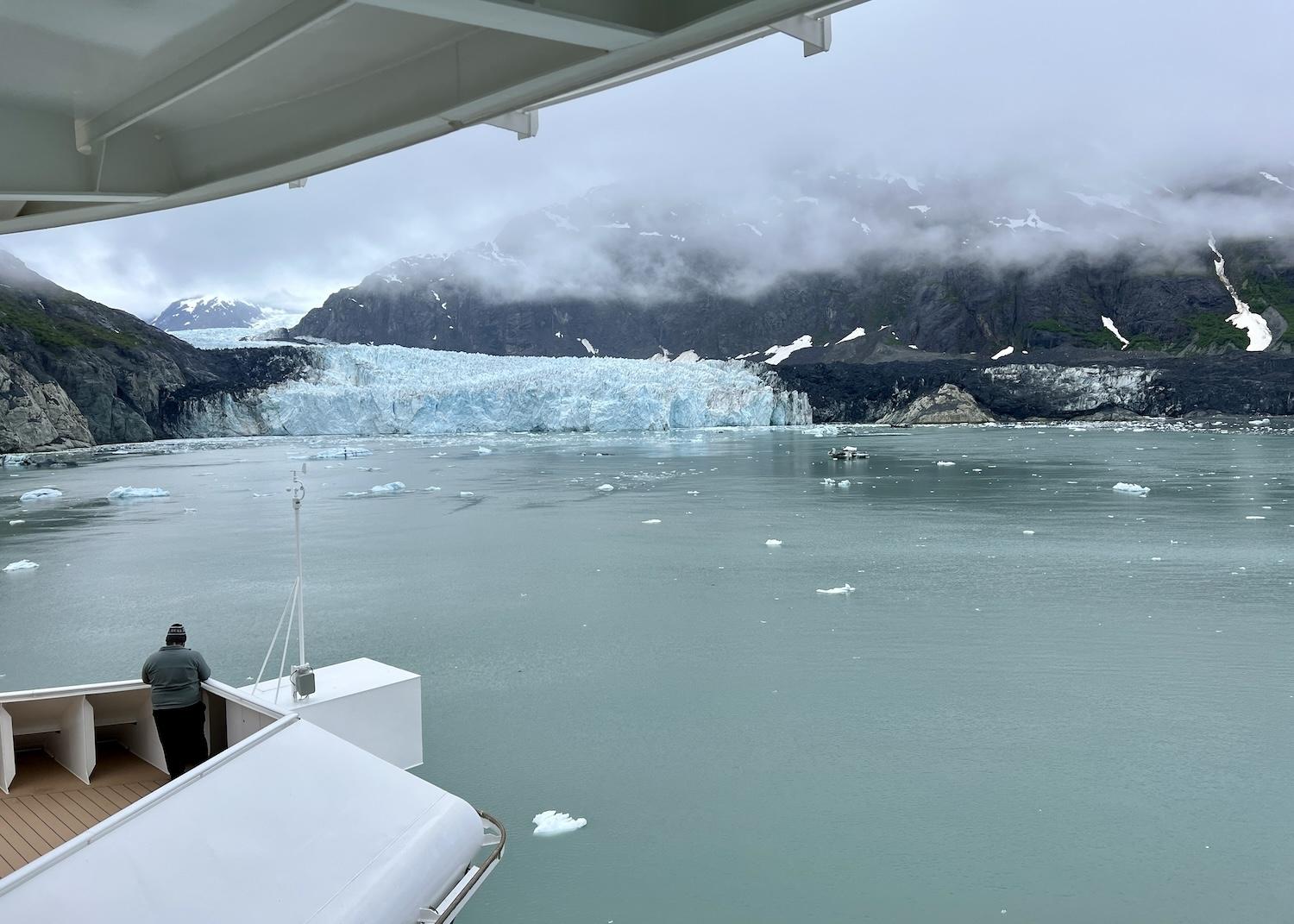
Look just to the right of Margerie Glacier and you'll see the dark and dirty looking Grand Pacific Glacier/Jennifer Bain
I’ve been blessed to see glaciers in Greenland, Nunavut and Alaska, mostly from Zodiacs and kayaks but once by landing on one in a flightseeing helicopter. When I decided to visit the Inside Passage with Princess Cruises on a seven-night trip out of Seattle, I wanted to see what it felt like to experience glaciers and a national park from the deck — or balcony — of a ship.
The first thing I packed? The National Park Service's Cruise Ship Environmental Monitoring and Compliance Program: 2023 Summary Report that was just released in April. It told me that Glacier Bay was set aside for protection in 1925 to study glacial behavior, see how the resulting movements impacted flora and fauna, and preserve glaciers “in a magnificent setting of lofty peaks” for visitors.
“In the late 1890s, ordinary travel was by large steamships, which brought passengers from ports as far as San Francisco specifically to view the tidewater glaciers in the park,” the report reads. “Since then, large cruise ships have replaced steamships as the primary means by which visitors access and enjoy the tidewater glaciers, with cruise passengers accounting for over 95% of all visitors to the park since the late 1960s.”
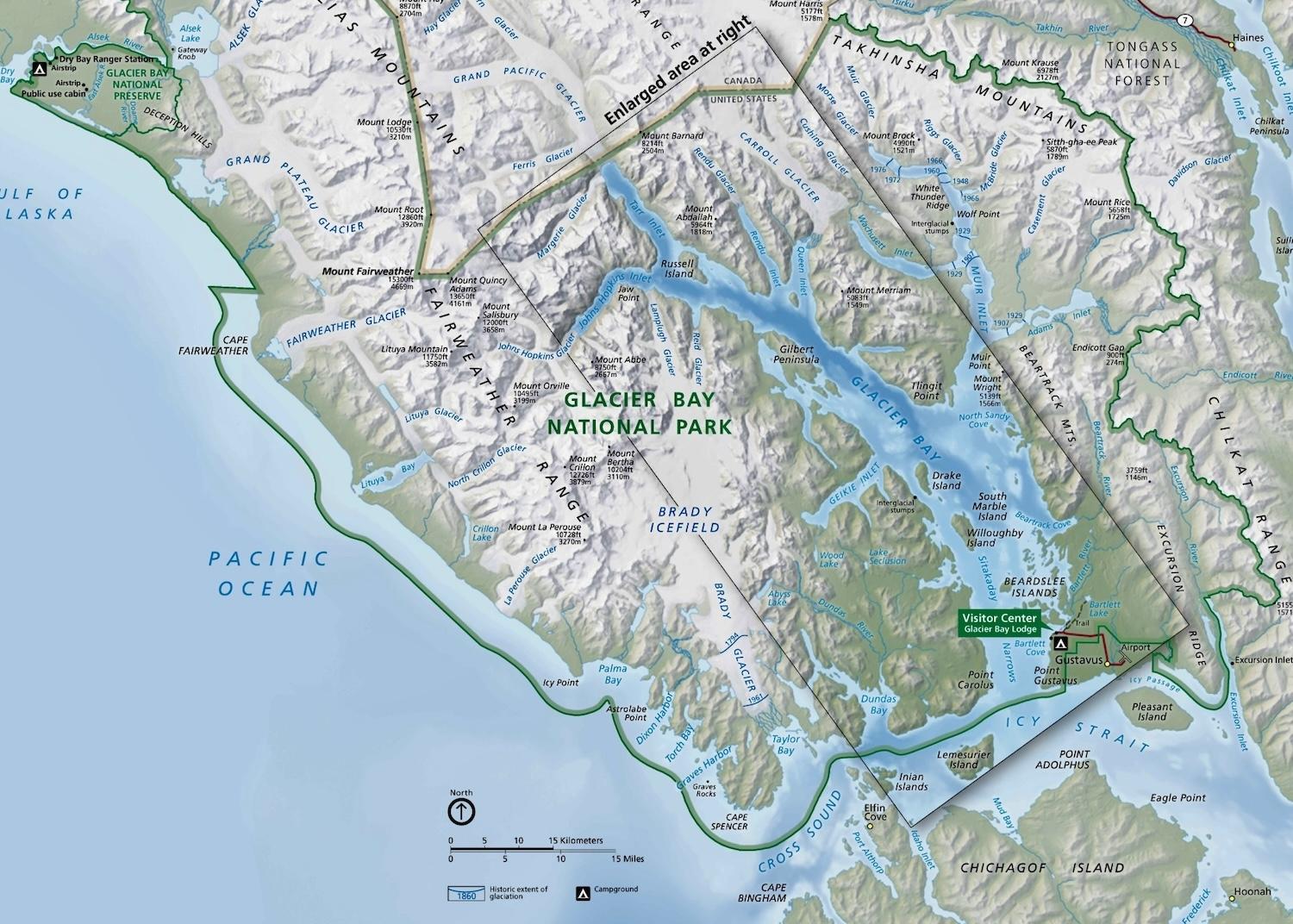
The National Park Service carefully manages daily cruise ship traffic in Glacier Bay National Park and Preserve/NPS Map
The NPS now manages large cruise ships on 10-year concession contracts and only lets two enter the park per day between April and October. As well, just three tour vessels (with fewer than 2,000 passengers), six charter vessels and 25 private vessels can enter each day.
We followed the typical routine, crossing into park waters from Icy Strait at dawn, picking up rangers and Alaska Geographic park store staff at Bartlett Cove, traveling from the mouth of the bay up into the Western Arm of the fjord, and spending an hour going in slow circles in front of Margerie and Grand Pacific glaciers so people on the port and starboard sides got equal viewing opportunities.
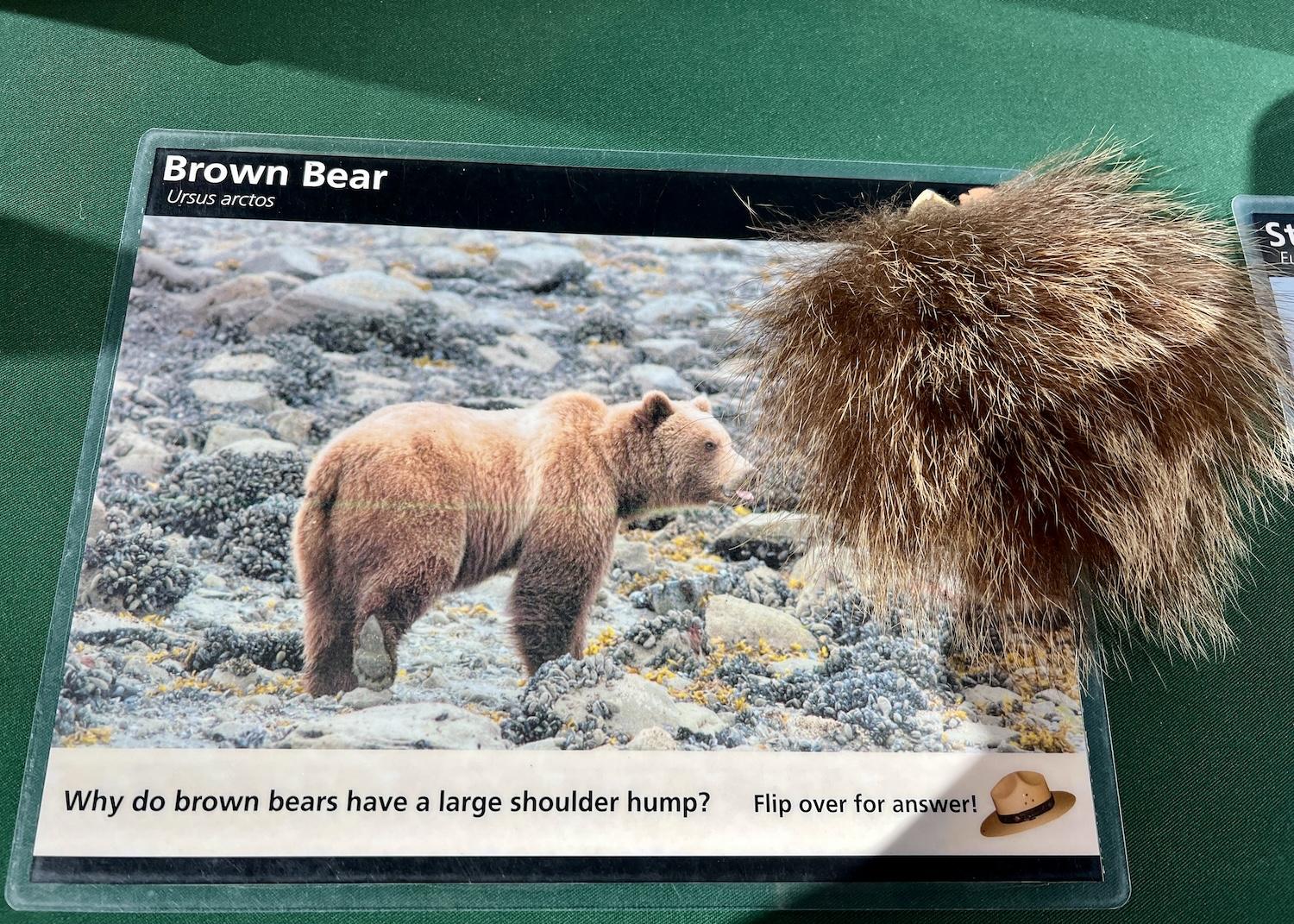
Those who missed the brown bear sighting in Glacier Bay could at least touch this real fur as part of a traveling NPS exhibit/Jennifer Bain
This is where I confess that when the rangers giddily announced a brown bear sighting, I had just got my Glacier Bay passport stamp and didn’t want to lose my place in line to buy a park beanie and John Muir sticker. With the help of Tlingit guides, Muir — the naturalist/environmental philosopher credited with creating the national park system — came here between 1879 and 1899 and wrote so enthusiastically about the glaciers that he sparked a tourism boom.
Anyway, by the time I made my way to the deck, the bear was gone and I felt like a fool.
One thing I did spot — a NPS sandwich board that read: “Join us in keeping Glacier Bay pristine for future generations. Please do not throw anything overboard. Take extra care that hats, napkins, etc. do not blow overboard. Please do not feed the wildlife or birds. Avoid disturbing wildlife with loud noises. Please respect your fellow guest’s experience.”

A Bald Eagle rests on a piece of ice that calved off a glacier in Alaska's Inside Passage/Jennifer Bain
Through the morning, I did enjoy the unmistakable roar of a calving glacier as ice chunks broke off from its edge and spilled into the Pacific Ocean. I photographed a Bald Eagle sitting on either a medium-large “bergy bit” or a smaller “growler.” The rangers had advised that Glacier Bay’s ice fragments aren’t big enough to qualify as icebergs but do provide important habitat and protection for various creatures.
I also discreetly studied my fellow passengers admiring the glaciers, some standing in the sunshine on the chilly open deck, others sitting in chairs pulled up to more protected windows flanking the pool. My 11-year-old son and I ate breakfast on our stateroom balcony and for those precious minutes, it felt like we had the glaciers all to ourselves.
When I found Ranger Eli Palka on deck, she enthused about coming on cruise ships as part of her job. “It’s amazing to reach such a diverse audience," she admitted while eagerly fielding questions from many of the ship’s 3,805 passengers.

Ranger Eli Palka fields passenger questions in front of Margerie Glacier in Alaska's Glacier Bay National Park and Preserve/Jennifer Bain
Ten of the most common Glacier Bay questions were handled in the four-page guide to the park left in our staterooms — along with those park brochures — the night before we arrived.
Why is the Grand Pacific Glacier, next to photogenic Margerie, so dirty? “It looks like a pile of rocks,” acknowledged Palka, “but I promise there’s ice there.” Avalanches, rock slides, tributary glaciers and the scouring of the valley have apparently caused dirt and rock to accumulate on this poor glacier’s surface.
What’s the weather like here? May and June are the sunniest months, but the area near the park headquarters gets 70 inches of rain a year so it's a wet and moody slice of heaven.
Is climate change affecting these glaciers? Alaska is warming twice as fast as the rest of the earth and 95 per cent of its 100,000 glaciers are thinning, stagnating or receding.

Discovery Princess passengers admire Margerie Glacier from a sheltered area by the ship's pool/Jennifer Bain
That report I had tucked away also detailed how the NPS oversees the Environmental Compliance and Monitoring Program and engages third-party technical experts to conduct random cruise ship inspections.
Last year, inspectors boarded 18 of the 19 cruise ship lines that visited Glacier Bay. They performed 33 unannounced audits and found that the ships “largely exceeded, with few exceptions, environmental compliance standards.” Companies vying for NPS contracts pledge to do things like use higher-quality fuel, refrain from discharging any form of wastewater in the park, maximize energy efficiency and reduce the chance of whale strikes by reducing speeds. “As a result of the concession contract process, cruise ships permitted access to Glacier Bay operate at higher environmental standards than those that occur in waters outside the park,” the report concluded.
While these environmental efforts aren’t necessarily visible to the average passenger, one mandatory condition of operating in Glacier Bay is — bringing rangers aboard for interpretation and education programs. We can also thank the NPS rules for the fact that ships must spend at least four hours north of Queen Inlet in the glacial area to ensure we have time to enjoy both the glaciers and on-board programs.

Ranger Rianne Candelaria joins a crowd admiring Margerie and Grand Pacific glaciers/Jennifer Bain
After enjoying Margerie and Grand Pacific at the head of Taar Inlet, we sailed by Jaw Point to admire Johns Hopkins Glacier from afar because that inlet was closed for harbor seal mating and pupping season. Then we cruised by Reid Glacier and Lamplugh Glacier, which has been nicknamed “Lamplugh the Blue” for its intense blue ice.
In between dashing around for glacier shots and looking in vain for more bears or whales, it was suddenly 1 p.m. and time to choose between half-hour ranger talks geared to adults, junior rangers or teen rangers. I chose the main talk where Palka — who made a “climate jump” transferring to Alaska from Death Valley National Park — spoke passionately in the theater about the migration of people, plants and animals.
Noting that we all “took a migration” to get to this park, and acknowledging that we were in the traditional territory of the Huna Tlingit, Palka stressed that Glacier Bay is constantly in motion. When the glacier surged 250 years ago during the Little Ice Age, the Tlingit were forced to relocate. Eventually the federal government seized control of the area. Scientists have been studying how plant life returns after a glacial surge. Endangered humpback whales summer now in these protected waters. The NPS and Tlingit now co-steward the park and are working towards healing their relationship.

In a shipboard talk, Ranger Eli Palka discusses how the Huna Tlingit co-steward Glacier Bay National Park and Preserve — their ancestral homeland — with the NPS/Jennifer Bain
When my son wondered whether the park film that was shown just before the talk was meant to be sad — it begged us to re-examine our relationships with the Earth — Palka had a swift reply. “A lot of people want to think that places around them aren’t changing but the place that we are today has changed so much over time and changes day to day. So it’s really important, I think, to recognize that these places change. That doesn’t mean it needs to be sad.”
We returned to our stateroom to ruminate while awaiting the final announcement from Ranger Lisa Moreno. Dubbed “the voice through the speakers,” she had been coming on our TVs through that bridge cam every so often with short scripted talks. We could only hear, not see, her.
Weather permitting, the rangers would disembark around 2:20 p.m. from the port side of the ship, and the best views of that would come from the bow and stern. “I hope that upon reflecting on this trip, you feel as powerful as the glaciers that you have seen today, and I hope that you think fondly of it," Moreno said. "Today has been one of the best days that I’ve encountered here at Glacier Bay and I truly hope that you feel as lucky as I do.”
I did indeed feel blessed, not just to commune with some of Alaska's most popular glaciers, but to have three eloquent rangers to ourselves for so long.
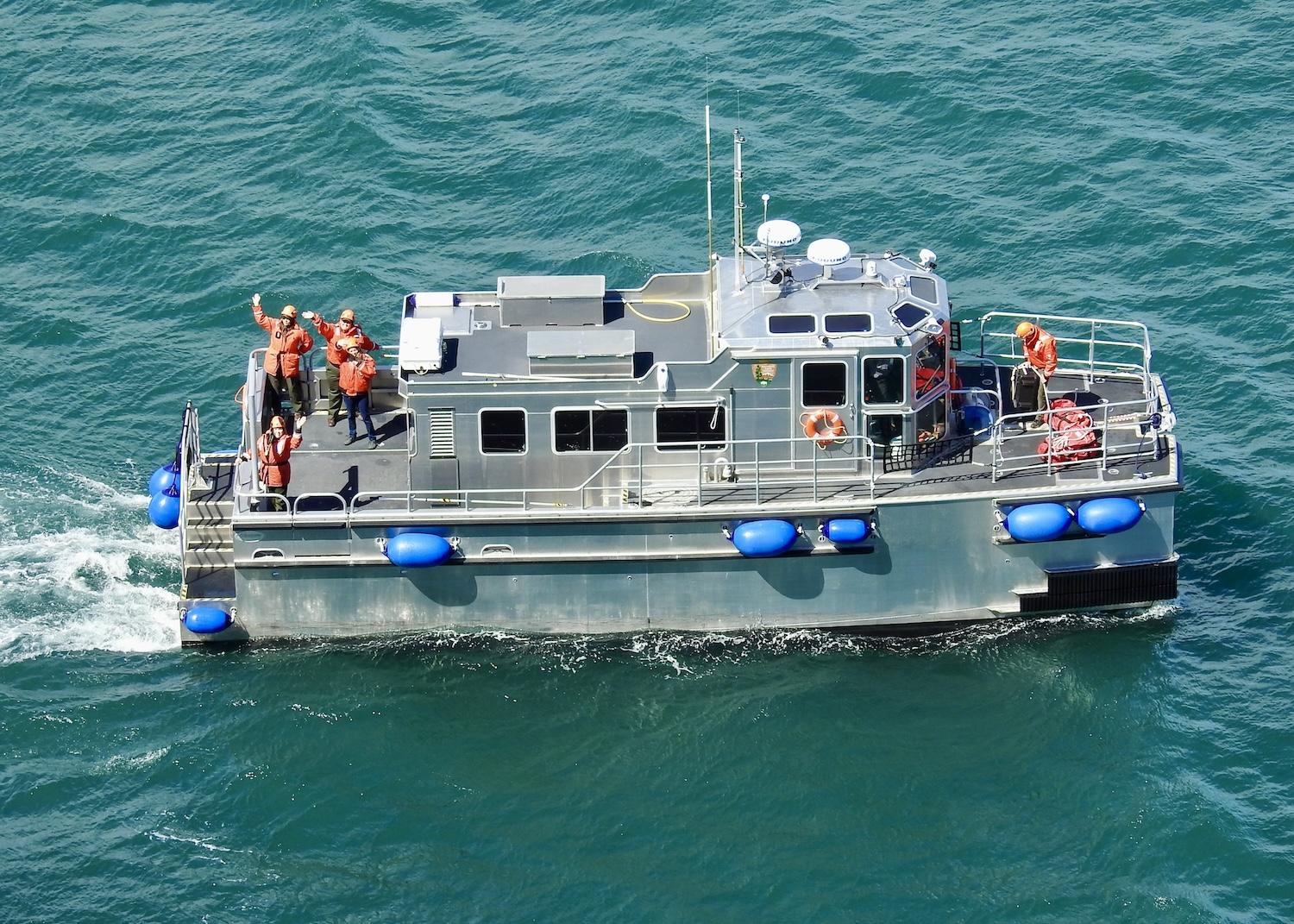
From the M/V Serac, Glacier Bay National Park and Preserve rangers wave goodbye to the cruise ship they just spent a sunny June day on/Jennifer Bain
It turns out that seeing this particular national park from the deck of a ship makes perfect sense and is an efficient and carefully controlled way of moving hundreds of thousands of visitors through this water-based region each year. My favorite part of the day, though, had nothing to do with glaciers or wildlife and everything to do with the unusual goodbye.
Built for the Park Service and named for a pinnacle of ice on the surface of a glacier, the Serac is a pilot boat/escort for cruise ships navigating Glacier Bay, but it ferries rangers and staff to and from ships and doubles as a research vessel.
Standing on Deck 17 just before 2:20, I watched the catamaran expertly sidle up to our mega ship and disappear briefly from view directly underneath me. Soon it shot back out to sea with those rangers aboard and waving enthusiastically from the stern deck. The Serac maneuvered behind us and slowly fell back, as if willing us to take one final look at beautiful Glacier Bay and the Fairweather Mountains before sailing away.

NPS rangers aboard the M/V Serac wave goodbye from Glacier Bay National Park and Preserve/Jennifer Bain


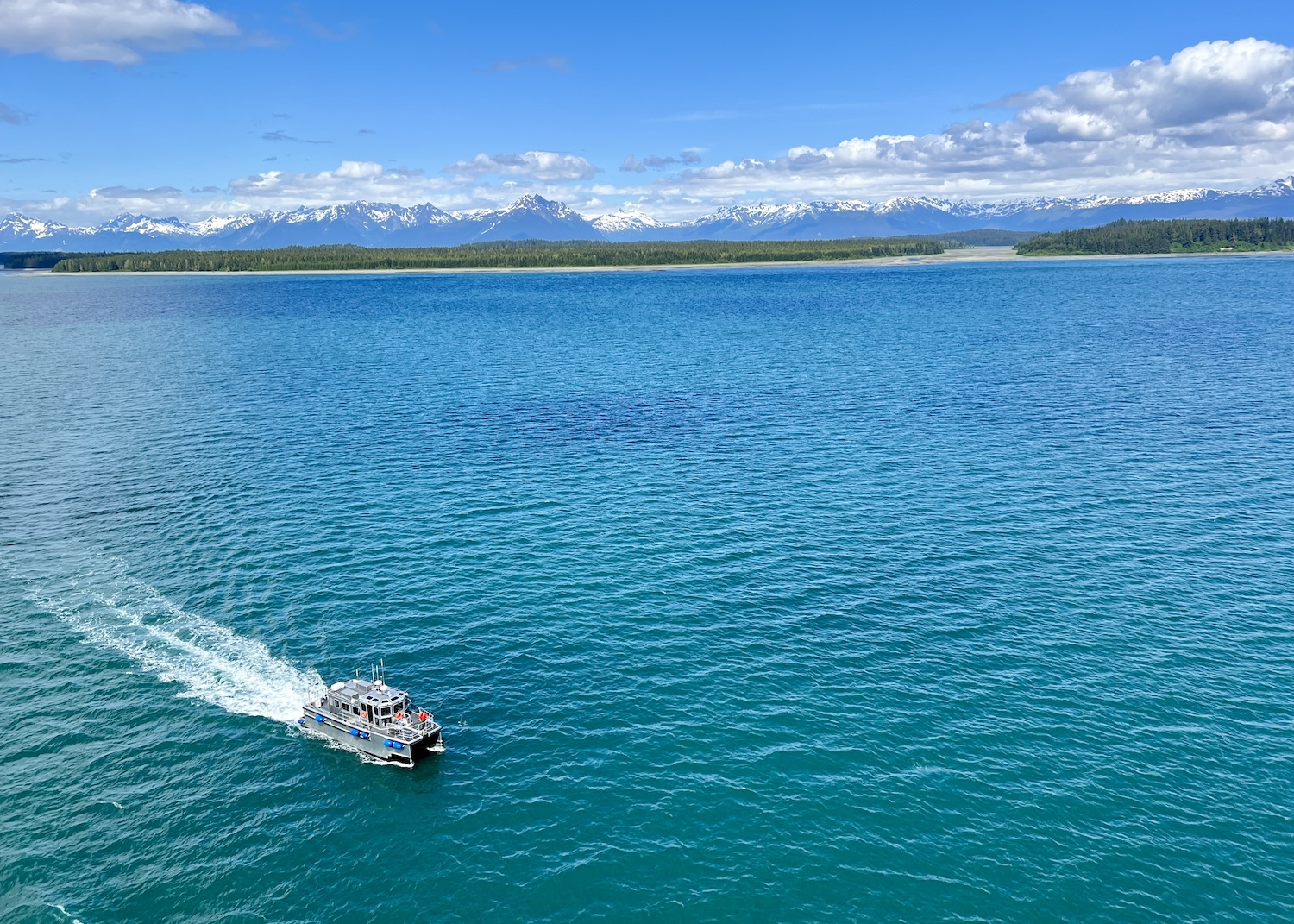

 Support Essential Coverage of Essential Places
Support Essential Coverage of Essential Places






